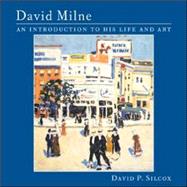
David Silcox is an art historian and cultural administrator who has held cultural portfolios at all levels of government. Silcox wrote the definitive biography, Painting Place: The Life and Work of David B. Milne, as well as other noteworthy books on art, including The Group of Seven and Tom Thomson.
| Introduction | |
| Early Promise and Early Success | |
| A Solitary Path | |
| The Great Depression: Years of Productivity | |
| Recognition and Acceptance | |
| Epilogue | |
| Selected Bibliography | |
| Index | |
| Table of Contents provided by Publisher. All Rights Reserved. |
The New copy of this book will include any supplemental materials advertised. Please check the title of the book to determine if it should include any access cards, study guides, lab manuals, CDs, etc.
The Used, Rental and eBook copies of this book are not guaranteed to include any supplemental materials. Typically, only the book itself is included. This is true even if the title states it includes any access cards, study guides, lab manuals, CDs, etc.